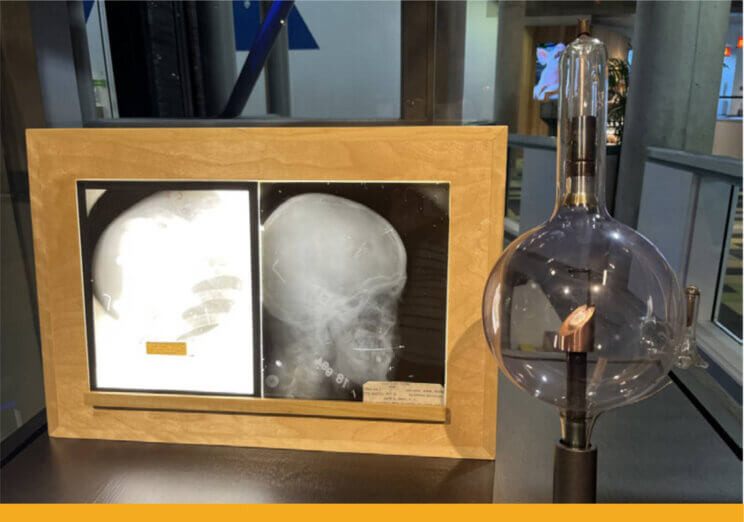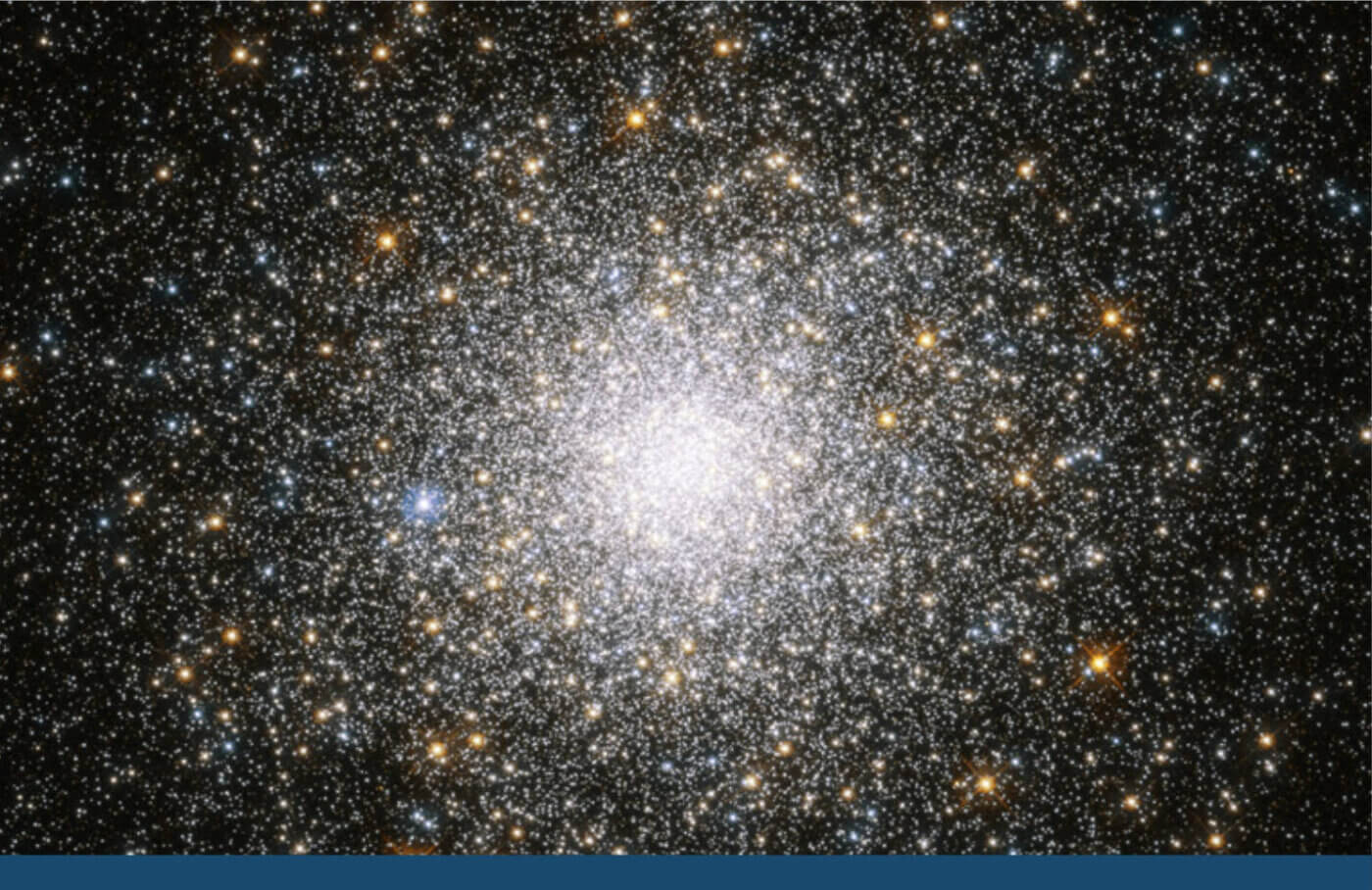
REVEALING THE
HIDDEN

In 1895, X-rays were discovered by Professor Wilhelm Conrad Roentgen.
As he worked with a glass cathode ray tube, he observed a fluorescent glow on a nearby table. When Roentgen shielded the tube with heavy black paper, he observed a fluorescent light generated a few feet away from the tube. He concluded that a new type of ray was being produced and found that this new ray could pass through most substances, casting shadows of solid objects.
Roentgen also discovered that the x-ray could pass through human tissue, but not bones or metal objects. He began to experiment with x-rays and used photographic glass plates to capture a film of his wife’s hand, showing the bones beneath the surface. Within a year of his discovery, the application of x-rays in medicine for diagnosis and treatment was firmly established.
What is a cathode ray tube?
Invented in 1855, cathode ray tubes are sealed glass tubes with most of the air evacuated. When high voltage is applied across two electrodes at one end, this causes a beam of particles (a ray) to flow from the negatively charged electrode (the cathode) to the positively charged electrode (the anode). The ray is detected when it hits a painted phosphor material at the far end of the tube and the phosphors spark or emit light.
2022: The International Year of Glass
Since 1959, the General Assembly of the United Nations has been designating years to acknowledge fields of international endeavor and the importance of their contributions to global society. As the International Year of Glass, 2022 provides a stage to celebrate one of the world’s most transformational and ancient materials.
From early obsidian tools to revolutionary advancements in modern science and technology, glass has been a trusted tool and commodity for centuries, shaping cultures on almost every continent. Glass has transformed and illuminated the world we live in, making our lives easier, safer, quicker and better; and it has made for a more colorful world too. To get in on the celebration, the Science Center will display different glass objects from our Collections each month during 2022!
Check out these artifacts from the Saint Louis Science Center Collections, all of which were donated by the St. Louis Society for Medical and Scientific Education.
Cathode X-Ray Tube
Cold cathode vacuum tube with copper anode
Victor X-Ray Corporation, ca. 1910
Glass X-Ray Plate
Shrapnel penetrating the front of a skull
Taken by Captain Edwin Ernst at Base Hospital 21
Rouen, France, ca. 1918
Glass X-Ray Plate
Shrapnel injury to shoulder joint
Taken by Captain Edwin Ernst at Base Hospital 21
Rouen, France, ca. 1918
Science Comes to Life
at Energy Stage
Stop by Energy Stage on the Lower Level to catch a thrilling STEAM Demonstration that brings science to life. STEAM Performances at Energy Stage happen daily and are free for everyone. Visit slsc.org/energy-stage for more information and show schedules.

Our Changing Earth
For guests who’ve seen Our Changing Earth at Energy Stage, now’s a perfect time to come back and see this popular demonstration in its newest form. Audiences can expect a look at the underlying science of climate change, a topic highly relevant to our daily lives. “As climate change progresses,” says John Nahon, manager of Energy Stage and earth science, “it is important to understand how human activity is changing our planet’s atmosphere. In this demonstration focused on physics, our educators will shed some (infrared) light on these processes.”

Science on Ice
In this literally cool Energy Stage show, discover the chemistry and physics inside hockey’s favorite form of water—ice! Grab a seat at the Energy Stage to see why ice is slippery and discover how factors like temperature can affect the way hockey players experience the game. Then, check out our latest special exhibition, HOCKEY: Faster Than Ever!
Summer Solstice
Summer is here! The Summer Solstice on June 21 marks the start of astronomical summer in the Northern Hemisphere and the Sun’s highestposition in the sky at local noon. After this date, the Sun will get lower in the sky and our days will grow shorter.
Delta Aquarids Meteor Shower Peak
The Delta Aquarid meteor shower is active each year from mid-July through late August. While best viewed in the Southern Hemisphere, the new moon in 2022 means it may be easier to spot “shooting stars” from this meteor shower in St. Louis.

Perseids Meteor Shower Peak
The annual Perseid meteor shower is usually one of the year’s best, but a nearly full moon is likely to spoil the show in 2022. For best viewing, look towards the northeast after midnight during the peak.








